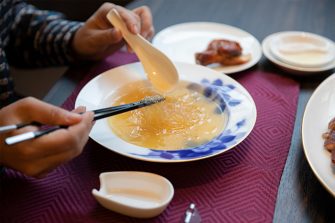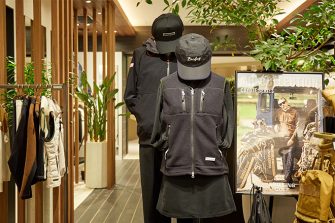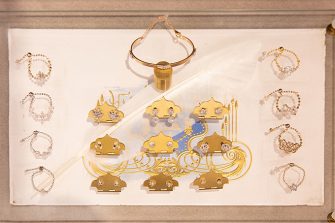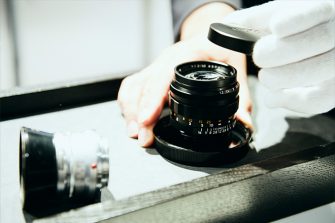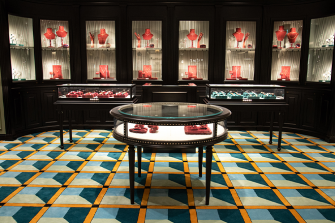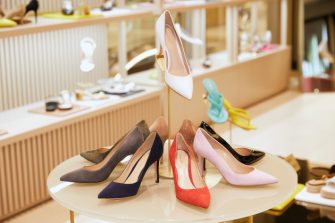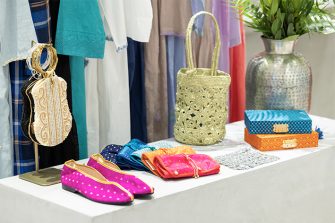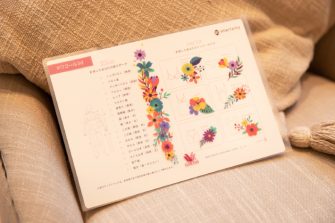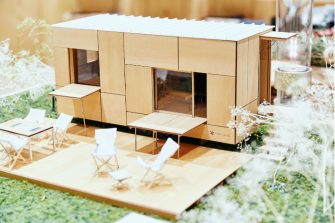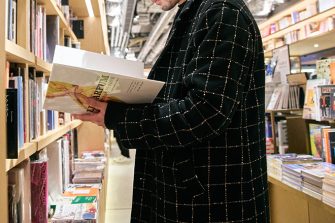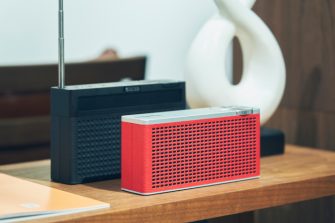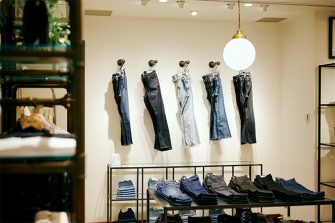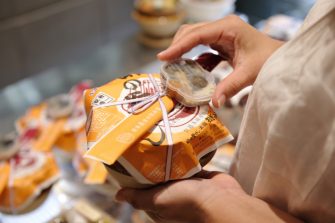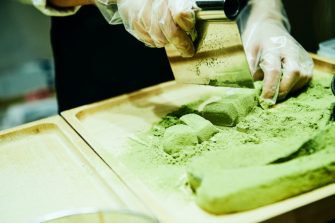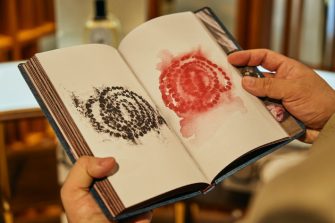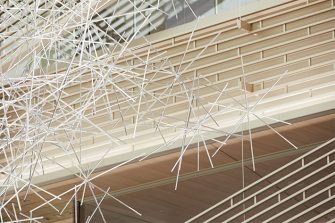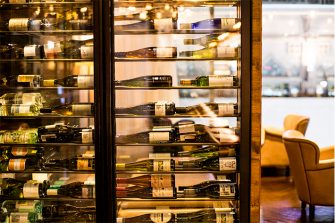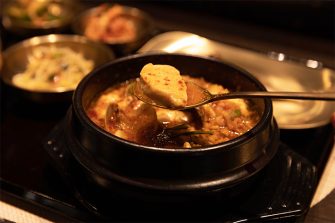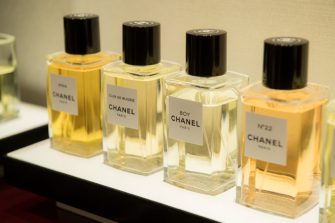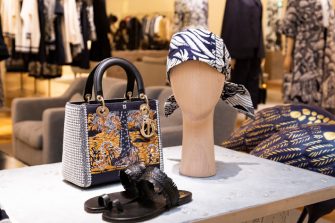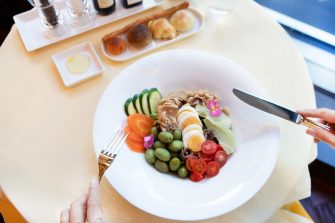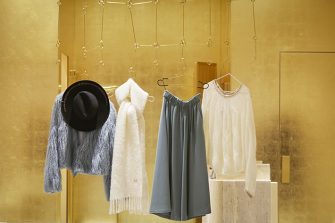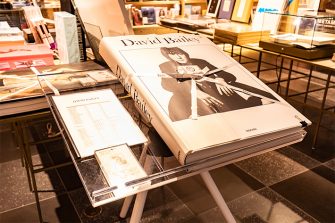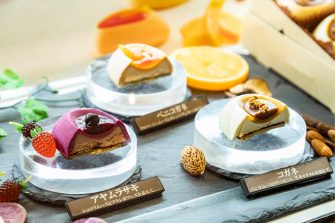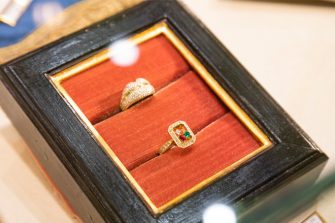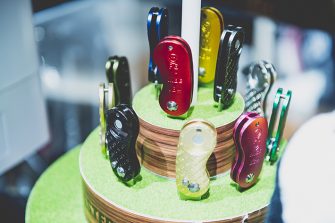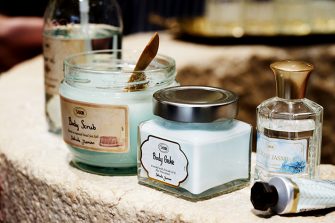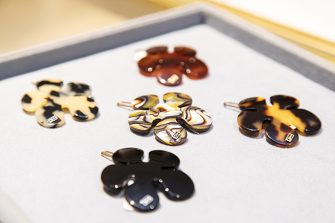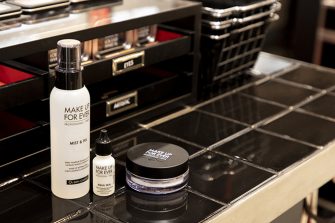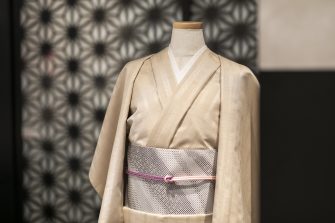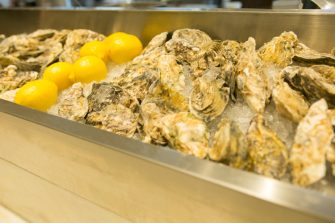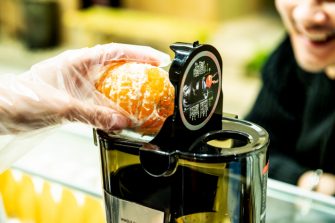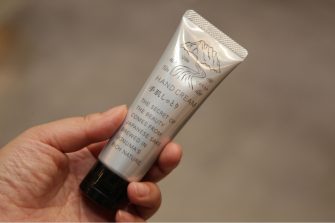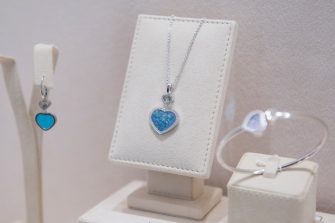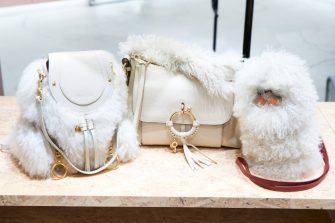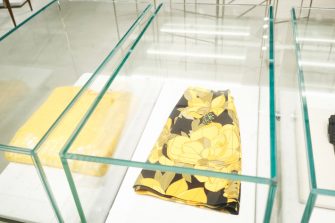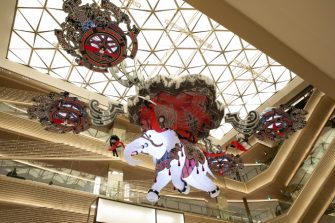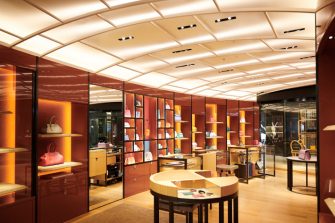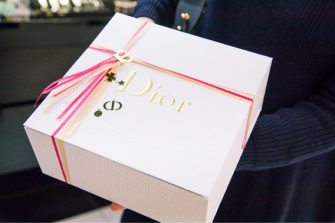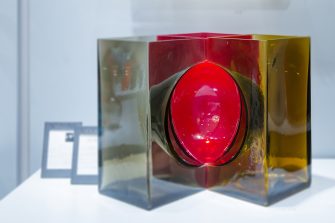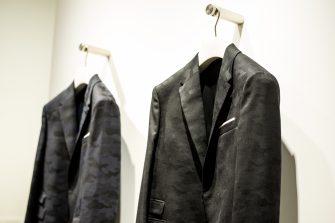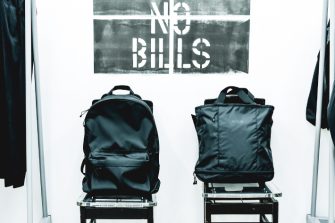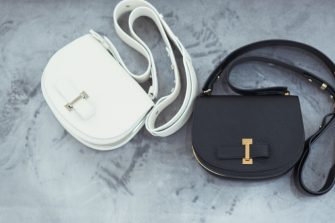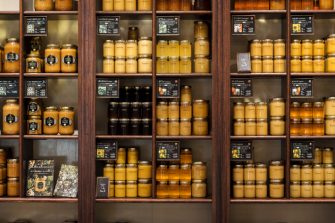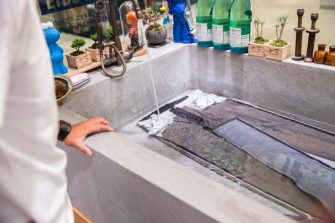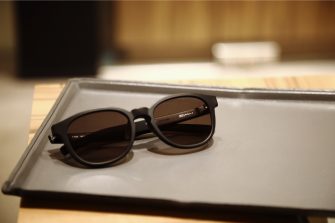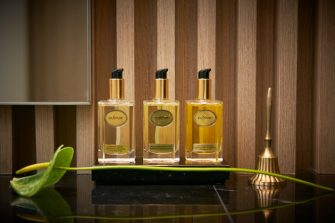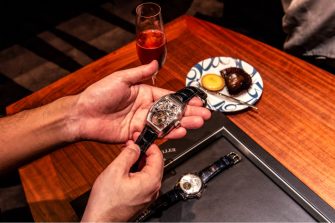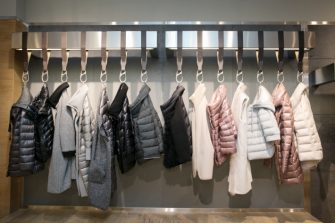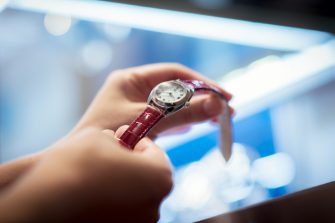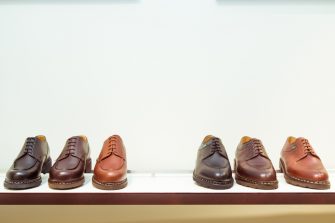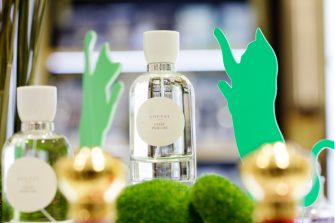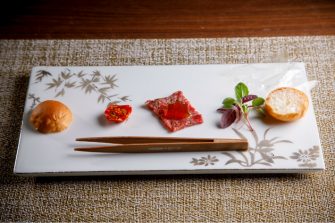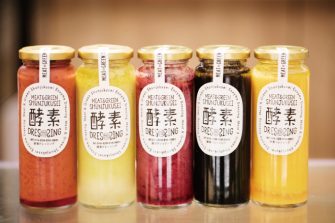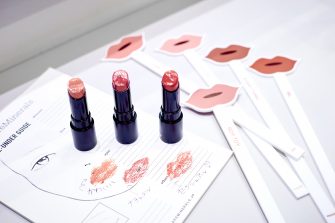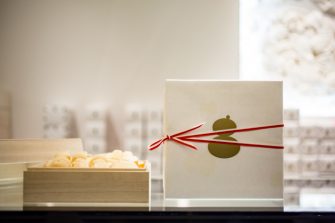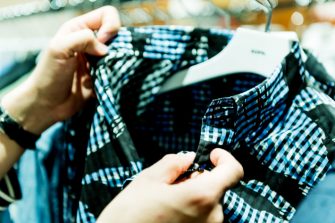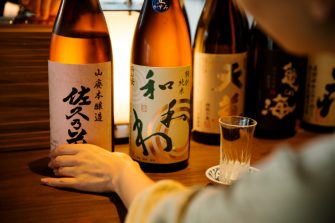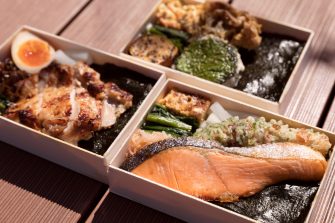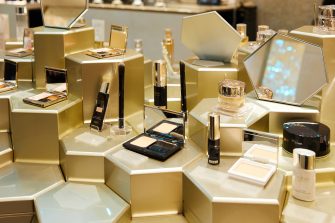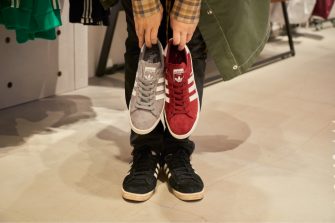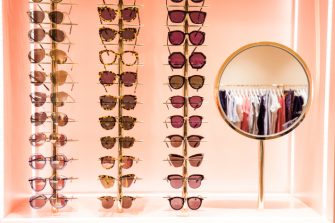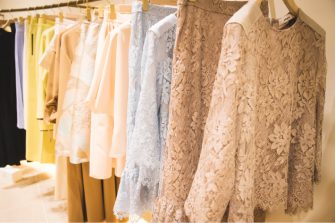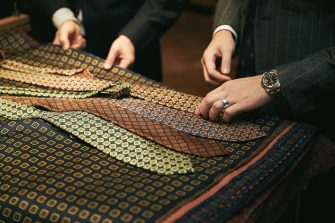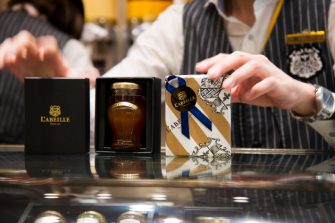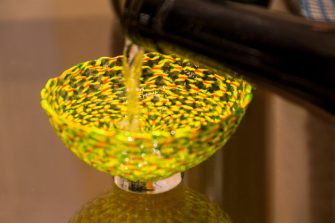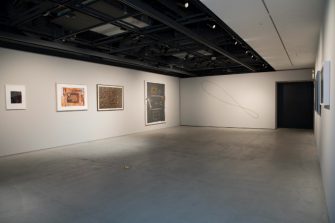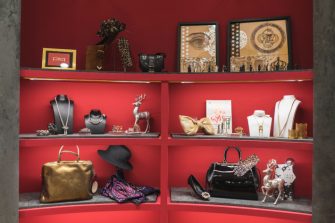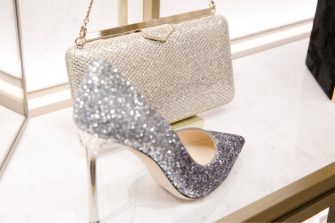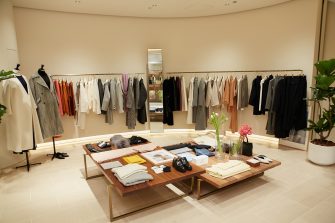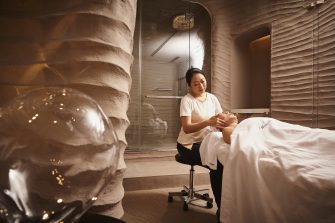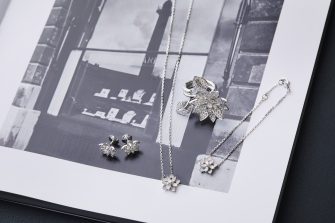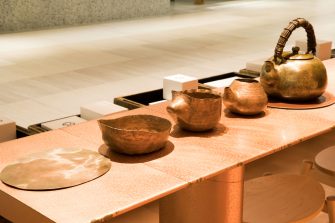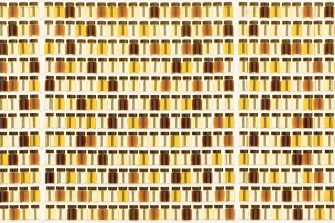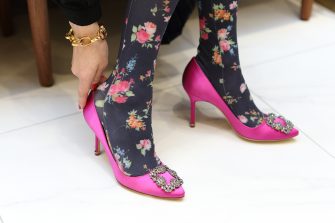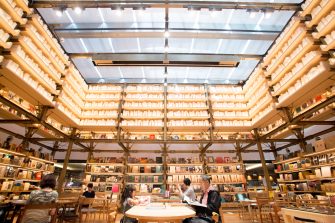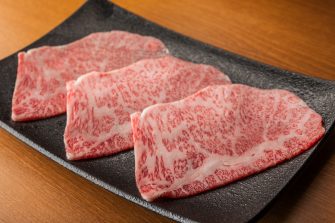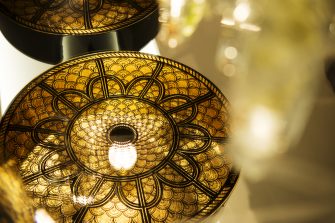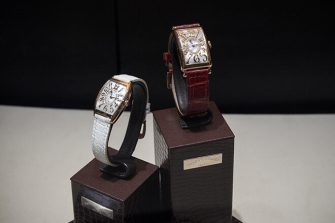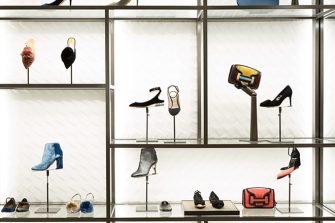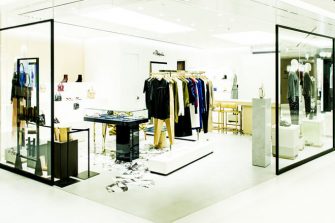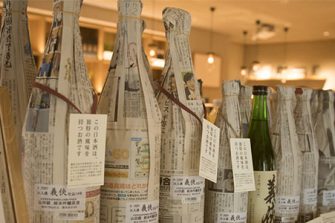
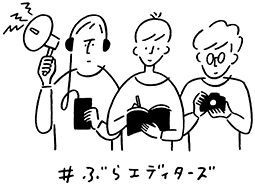
GINZA SIX EDITORS
时尚、珠宝&手表、生活方式、美容、食品…
精通各种类型的个性丰富的编辑们,在GINZA SIX上闲逛
记述走路发现的乐趣。
无论何时去都能遇到新事物是有理由的。 A Place Where You Find Something Whenever You Go
八木基之
GINZA SIX EDITORS Vol.65
从小就喜欢闲逛。小学生的时候总是绕道,基本上不会直接回家。即使是现在,从公司回来的时候,突然想到去喝酒,或者去澡堂,看电影。……。不仅如此,在前面的车站下车,闲逛回家。而且,在这期间也没用的便利店站着读。重要从以前开始就没有改变。
尽管如此,GINZA SIX也是最适合闲逛的地方。看来店铺林立的通道仿佛是银座小巷里的小径。不是笔直而是随机的,故意弯曲的布局。哪里有什么事,有点难以理解。但是在拐角的时候,突然眼前出现了一家很棒的店,或者找到想要的东西。那真是太开心了。
话说回来,我是建筑师安藤忠雄的负责人,从现在开始8年前,我曾在意大利出差的老师进行过采访。那时老师说了这样的话。“不要太功能了。为什么有很多人去威尼斯多次去威尼斯,那是因为那条街好像迷宫。无论何时去,都会有新的发现和感动,所以人都会重复”。原来如此,GINZA SIX的好处就在于此。无论何时去都能遇到新的事物。所以要经过好几次。
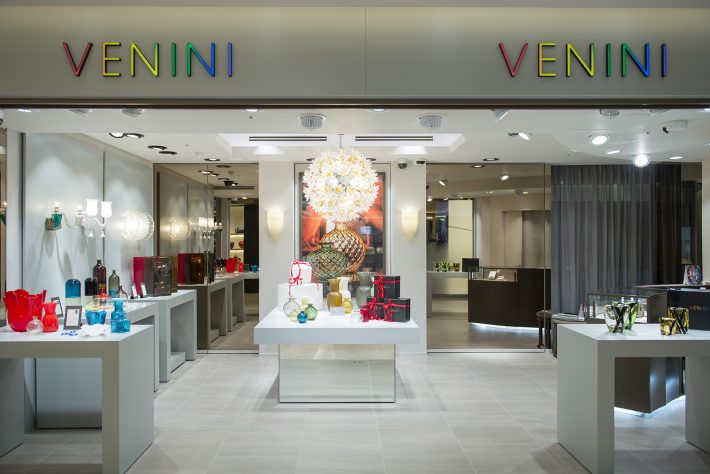
这次,首先拜访的是位于1楼的“VENINI”。1921年创业的老字号威尼斯格拉斯的品牌,我知道这个威尼斯也是在意大利采访安藤忠雄的时候,老师在米兰萨罗尼发表了和威尼尼尼斯合作的照明“VELIERO”。到现在为止已经亲自参与了4个产品,现在这家店铺里排列着第4部新作的主题“ANDO COSMOS”。
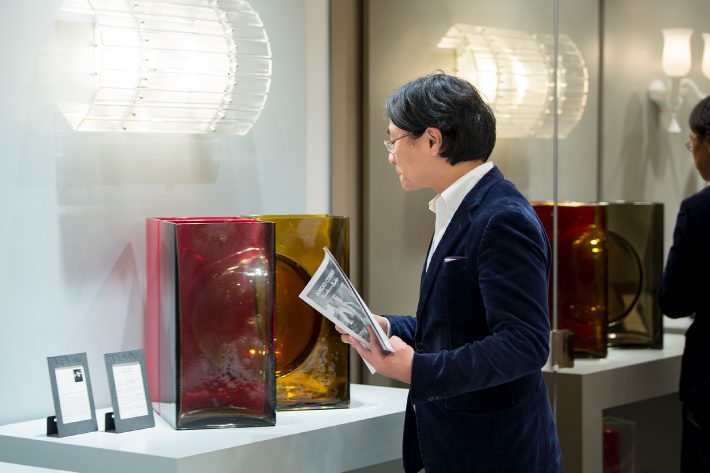
“ANDO COSMOS”是老师所说的“建筑的原点——立方体和球体组合而成的”。以水晶、蓝色、绿色、红色四种颜色展开。价格是水晶3,080000日元,其他3种颜色2880000日元(以下全部不含税价格)。这种压倒性的存在感,如果装饰在家里,一定会成为室内装饰的主角。水晶是世界限定19件,其他3种颜色是30件,在日本有4件,但是已经卖出了3件。不愧是ANDO人气!
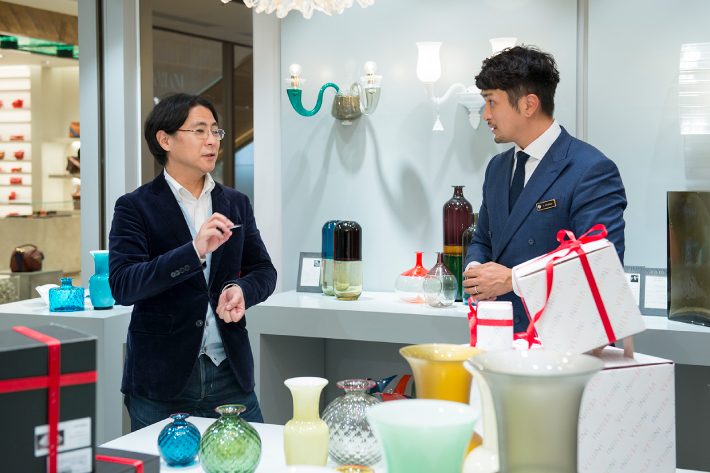
此外,威尼斯还有从枝形吊灯到花瓶等各种各样的产品。这些都是威尼斯的Maestro一个一个地吹制而成的,颜色是绝妙的。光透过反射的样子总之很美。据说威尼斯拥有100多种颜色的调色板。这次被朋友叫到新建的房子里,我想把威尼尼斯的小花瓶作为祝贺带去。虽然ANDO COSMOS是不行的,但是花瓶系列的价格也比较合适,非常适合礼物。
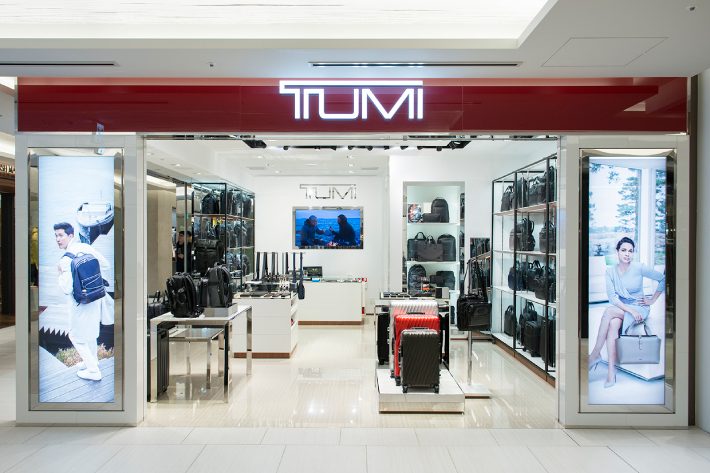
接着是5楼的楼层。这里的鞋和包非常丰富。闲逛的时候,映入眼帘的是“TUMI”的店铺。就我个人而言,使用了图米巴厘棒尼龙的卡里盒子使用了10多年。正想着差不多该买新的东西了,所以进了店里。
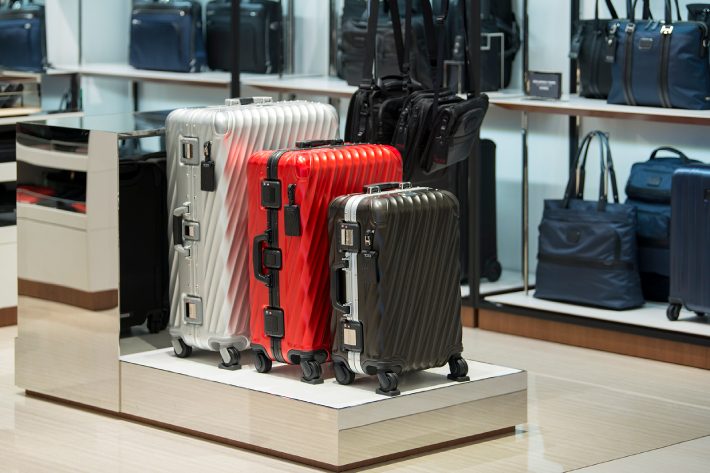
19 DEGREE ALUMINUMINUM是铝制的盒子。如其名,以19度的角度,斜线在表面上实施。这不仅仅是美丽,还为了提高强度,是重视功能的土米式设计。颜色有马特黑和银色,季色的琥珀和伽玛4种颜色。从带上飞机用(100000日元/甘蓝色110000日元)到短期住宿的旅行用(120000日元)、长期住宿的旅行用(135000日元)3种。换这个也不错。

尽管如此,图米的功能性真的让人吃惊。日本限定假期收藏品的3WAY布里夫(69000日元)是其代表。最近,因为经常随身携带电脑,背起来非常方便。不管是谁看,一眼就知道设计上都是土米的商务包,所以即使搭配夹着夹克和西装,也不能像制服的高中生一样,很开心。总之,口袋很丰富,我个人很喜欢可以收纳折叠伞和塑料瓶的防水加工口袋。

然后,我觉得这很好的是图米的折叠伞。不仅仅是一推就打开,也可以关闭。另外,为了不让伞翻过来,设置了通风孔,不愧是土米,很灵气。说到黑色的折叠伞,总觉得是大叔的道具,但是这个土米的伞不一样。看起来很成熟的男性,真的很想要。M号的话是10000日元,如果丢失了就会凹陷的价格。…。
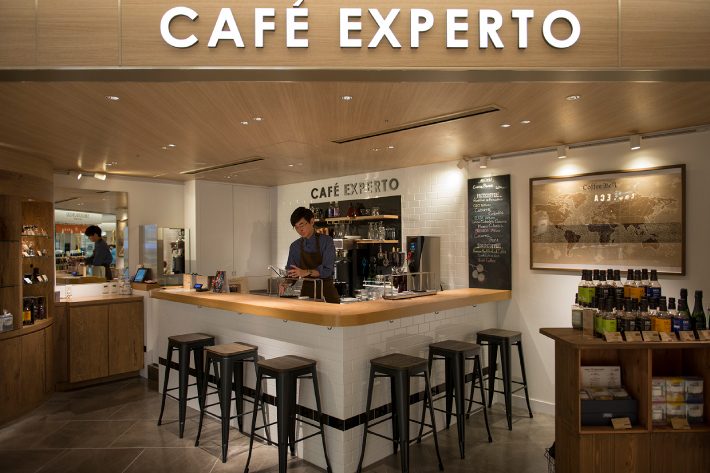
下次休息一下,去地下2层的食品楼层。这里聚集了新业态和东京都内首家分店等只有GINZA SIX才有的店。闲逛,忽然进入了直觉的店。这就是“CAFÉEXPERTO(咖啡厅)。这里是从生产国的品种、栽培、精选到日本的保管、焙煎都非常讲究的咖啡店。要说被什么吸引,那就是柜台里的宫崎壮史先生的样子。毫无疑问,充满了可以沏好喝的咖啡的气场。
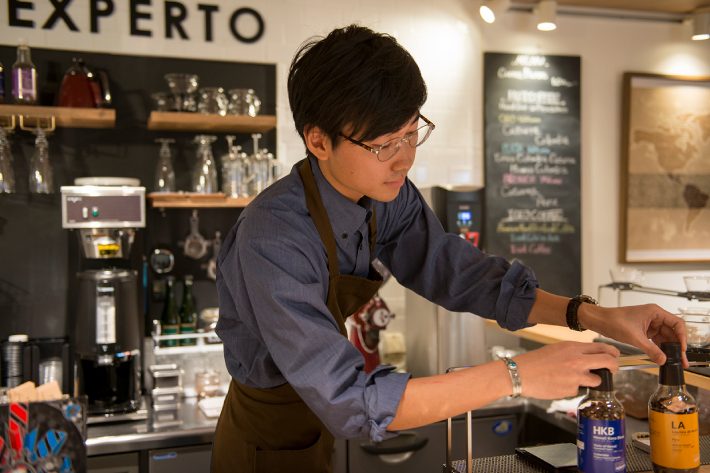
然后,按照宫崎先生的推荐,我要喝在哥伦比亚·卡图拉的贝贾比斯塔农场采到的卡图拉种咖啡。宫崎先生说:“沏法的话味道会有多大变化,我们来比较一下饮用吧。”用手滴落和法式冲压这两种方法沏好的。即便如此,宫崎先生的举止令人心情舒畅的事。不知不觉就迷上了。从细心地注入热水的姿态中可以感受到对咖啡的热爱和热情。据说宫崎先生为了将咖啡做到极致,曾在夏威夷的咖啡农场工作过。“对咖啡豆来说,其实最重要的是运输。我们的豆子都是在适当的温度管理下运来的。”听了那个讲究,一杯1500日元的价格也能接受。

虽然是那种味道,但是用手滴落沏的话,完全没有杂味,让人觉得这是咖啡,有透明感的味道。经过喉咙后,余韵流鼻涕,持续了一段时间。已经不能形容为优雅了。另一方面,用法式压床沏的话,在放入口中的瞬间,有拳击的味道会扩散到嘴里。虽然同样是豆子,但是在沏法上会有这么多不同的味道呢,咖啡的深奥让人吃惊。
最后,为了寻找银座的特产,决定在这个食品楼层闲逛。因为有很多想要的东西而感到困扰。即便如此,在GINZA SIX上闲逛真的很开心。回过神来就呆了,GINZA SIX就是这样的地方。
Text:Motoyuki Yagi Photos:Takao Ota Edit:Yuka Okada
I’ve always liked wandering, ever since I was a kid. In grade school, I’d always swing by here and there. I rarely went straight home. Even now, after work, I go out for drinks on the spur of the moment, step into a public bathhouse, or go and watch a movie. I’ll get off the train a stop early and wander home on foot. Then, on my way home, I’ll duck into a convenience store for no reason and stand there reading a magazine. In all these years, I haven’t changed.
GINZA SIX is a great place to wander. Its store-lined hallways are modeled on the little Ginza alleyways found off the beaten path. The halls are laid out randomly, and they curve. They’re not set along ruler-straight lines. You don’t always know exactly where everything is. But when you turn a corner, a great store suddenly appears before your eyes, and you find something you like. That’s surprisingly fun.
Covering the architect Tadao Ando eight years ago, I happened to follow him on a business trip to Italy to research an article. While we were there, he told me, “Obsessing over the functional can be bad. Why do you think people come to Venice again and again? It’s because the city itself is a labyrinth. You’re thrilled once again and make new discoveries each time you visit. That’s why the city has so many repeat visitors.” I thought that made sense. I think that’s also what makes GINZA SIX special. No matter how many times you go, you find something new. It makes you keep going back.
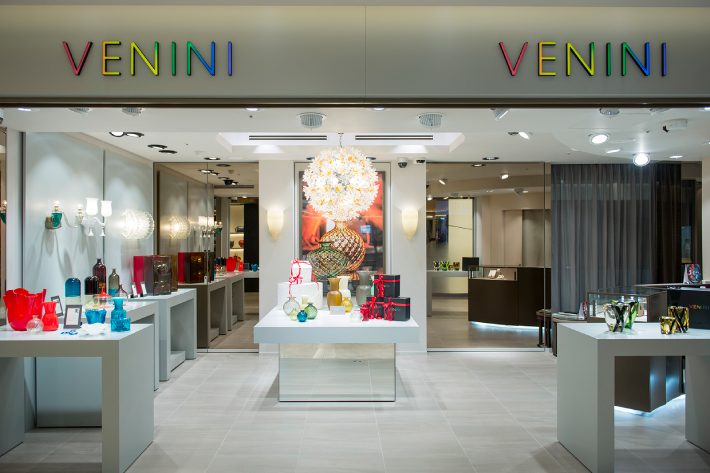
My first stop today is Venini on the first floor, a venerable Venetian glass brand established in 1921. I first discovered Venini on that trip to Italy with Tadao Ando, who released the Veliero lamp he designed with Venini at Salone del Mobile Milano. The architect has been involved in four collaborations with Venini so far. This store carries his fourth work in the series, Ando Cosmos.

Ando Cosmos is an object that combines cubes and spheres, “the foundational geometric elements of architecture,” as the master put it. It comes in four colors: crystal (clear), blue, green, and red. The crystal Cosmos is priced at 3,080,000 yen. The other three colors are 2,880,000 yen each (all prices listed before tax). The work has an unmistakable presence. Displayed at home, it would undoubtedly become the focal point of your interior. Only 19 of the crystal and 30 of the other colors have been created. Japan had four, but three have already sold, a testament, if any were needed, of Ando’s popularity.

Venini offers various other products, from chandeliers to flower vases, each created as one of a kind by master Venetian glassblowers. The range of colors is exquisite, and the light penetrating and reflecting off the glass is simply lovely. Venini’s color palette features more than 100 colors. I’ve been invited by a friend to see his new house, and I think I’ll bring him a small Venini vase as a housewarming gift. The Cosmos is, of course, out of my range, but the vases are reasonably priced and would make good gifts.

Next, I head up to the fifth floor. Here, everywhere I look, I see shoes and bags. As I’m wandering about, Tumi catches my eye. I’ve had a Tumi ballistic nylon suitcase for over ten years and was just thinking it was time for something new, so I went in.

19 Degree Aluminum is their collection of aluminum suitcases. As the name suggests, the diagonal ridges on the surface are at 19 degree angles. Not only are the lines beautiful, they strengthen the case, a functional design touch that’s also a Tumi trademark. The suitcases come in four colors—matte black, silver, gunmetal, and amber, the last one as a seasonal color—and in three formats—a carry-on (100,000 yen; 110,000 yen for gunmetal), a short-stay suitcase (120,000 yen), and a long-stay suitcase (135,000 yen). There’s no question they’d make good replacements for my current suitcase.

Tumi’s functionality is truly astonishing. A perfect example is the Three-Way Brief (69,000 yen), available only in Japan. I carry a computer around with me all the time these days, so a backpack is very useful. Anyone can tell at a glance it’s a Tumi business bag; the design is perfect for carrying with a jacket or suit without creating the impression of a high school student in uniform. It has plenty of pockets. I especially like the waterproof pocket, perfect for a collapsible umbrella or plastic drink bottle.

Tumi’s collapsible umbrella also catches my eye. It both opens and closes with the press of a button. It features air vents to keep the umbrella from turning inside out in gusting winds, a typical and carefully considered Tumi touch. Black collapsible umbrellas tend to be associated with typical middle-aged men, but this one breaks the mold: It’s more the accoutrement of a refined gentleman. I find myself wanting one. The umbrella in medium size is 10,000 yen, so losing it wouldn’t be trivial, but still…

Thinking to take a break, I next head to the Food Floor, the second belowground floor. Many of the restaurants and stores found here are Tokyo firsts and exclusive to GINZA SIX. Many present new formats. I wander around a bit and enter a place I find immediately appealing. That place is Café Experto, a coffee shop that takes special care with everything from bean varieties, cultivation and selection in the country of origin, to storage and brewing in Japan. I’m particularly drawn to the demeanor of Takeshi Miyazaki behind the counter. He has the aura of someone clearly capable of brewing a delicious cup of coffee.

Following Miyazaki-san’s recommendation, I choose Caturra bean coffee from Colombia’s Bellavista farm. Miyazaki-san suggests I compare two different brewing methods to see how the brewing method affects the coffee’s flavor. I have the cups brewed via hand-drip and French press. I’m entranced by Miyazaki-san’s graceful gestures as he works. The care with which he pours in the hot water vividly communicates a passion for coffee. Miyazaki-san tells me he once worked on a coffee farm in Hawaii to find out as much as he possibly could about coffee. “An important aspect of coffee beans is, in fact, how they’re transported. Almost all our beans are transported under strict temperature controls.” The obvious care that goes into a single cup helps explain the 1,500 yen price.

Now, to the taste: The hand-drip has a limpid flavor free of unpleasant notes—it almost doesn’t seem like coffee. After I take a sip, the aftertaste lingers in my nose for a long time. Highly refined is the most apt description. In contrast, the French press has a punchy flavor that fills my mouth the moment I take a sip. The coffee beans are the same, but the flavors are completely different. The profound complexities of coffee amazed me.
Finally, I wander the Food Floor looking for a Ginza souvenir. It’s hard to choose—there’s so much that I want. Still, wandering GINZA SIX is a sheer joy. Before you know it, you’ve been here for hours. It’s that kind of place.
Text:Motoyuki Yagi Photos:Takao Ota Edit:Yuka Okada
八木基之
1972年出生。上智大学毕业后,进入日之出版。之后,在海外闲逛后,参与了《东京日历》的创刊。2006年进入幻冬舍,隶属于《GOETHE》编辑部。2018年开始担任网络版的GOETHE总编。


